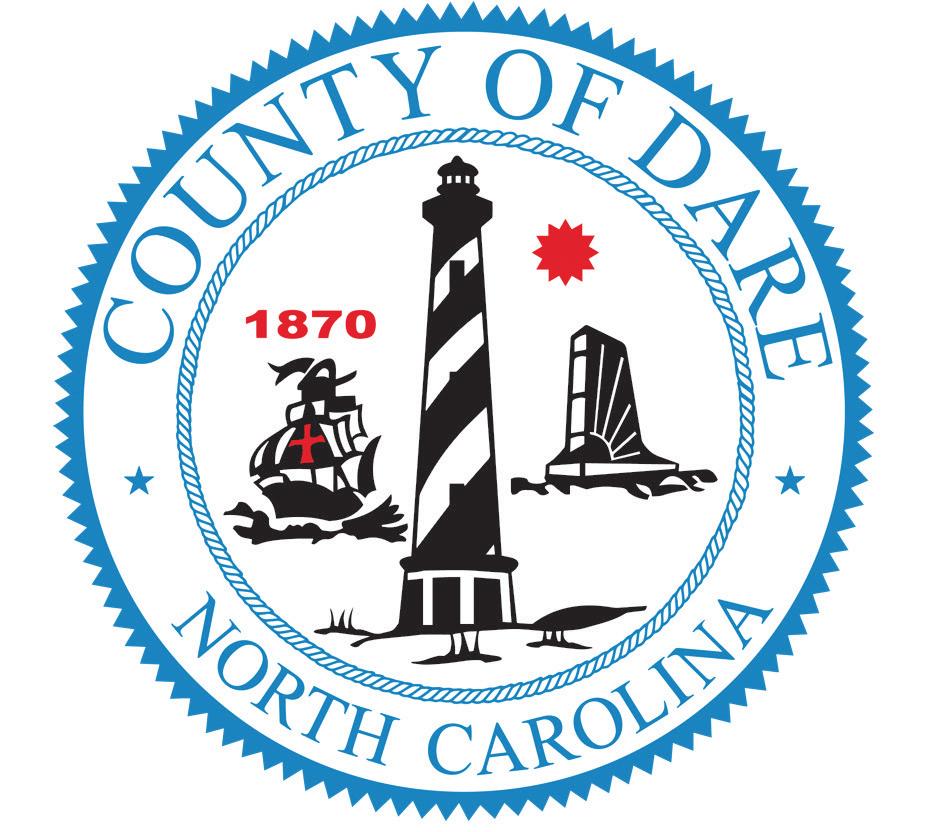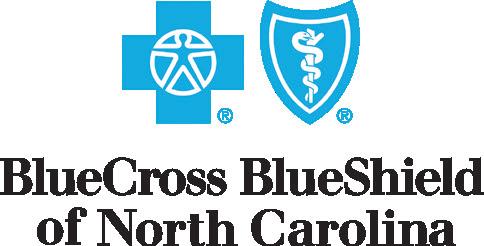Unique ways to volunteer
ndividuals can give back to their communities in various ways. Some may sign up to work with a local fire company, while others may help to organize community-wide events that inspire people to get out, meet their neighbors and take pride in their towns and cities. Indeed, the opportunities to make a difference in one’s community abound, especially for those willing to consider unique ways to volunteer.
• Share your expertise. Established professionals with ample experience in a given arena can be particularly helpful with community initiatives. For example, experienced project managers can volunteer with local government offices and help to plan town-wide celebrations that bring locals and local retailers together. Experienced accounting professionals may volunteer with local senior centers to offer complementary or low-cost tax services to aging community members living on fixed incomes.
• Help to raise funds. Fundraising may not be the first activity individuals associate with volunteering, but charitable organizations must be able to continuously raise financial support to meet their missions. Individuals can help to organize fundraising events like black-tie dinners with silent auctions that are both fun and fruitful for local charitable organizations.
• Get behind the wheel.

Various organizations, including local houses of worship and senior centers, help aging men and women get around town. Volunteer drivers make such efforts possible, so individuals who want to give back can offer to drive aging and/or immobile community members to religious services,

weekly events like bingo night, or even offer to drive incapacitated neighbors to and from their doctor’s appointments.
• Start a program for local youth. Adults with a passion for a particular hobby can share that love with local youths by volunteering to start a program
or club that teaches young people the basics of a particular activity. For example, adults with a love of sailing can work with local township officials and develop a sailing instruction program for community youths. If reading is a passion, start a book club for teenagers that encourages them
to discover their own favorite literary genre. Volunteering presents a wonderful way to give back to one’s community. There’s no shortage of ways to offer your time and services in an effort to make your community an even better place to call home.


Senior Living
WEDNESDAY, NOVEMBER 27,
Variables that could elevate your risk for stroke
The World Stroke Organization notes that more than 12.2 million individuals experience stroke each year across the globe. Perhaps even more telling, the WSO reports that, globally, one in four people over age 25 will have a stroke in their lifetime. Stroke is indeed a threat to public health. However, despite the prevalence of stroke, individuals are not helpless against it. Various risk factors for stroke are within individuals’ control, and it’s never too early for adults to prioritize stroke prevention. With that in mind, the following are some of the most common risk factors for stroke, courtesy of the WSO.
• Elevated systolic blood pressure: The American Heart Association notes that an elevated systolic blood pressure means the upper
Knumber on a blood pressure reading is between 120 and 129. Systolic blood pressure measures the pressure your blood is pushing against the artery walls each time the heart beats. Individuals diagnosed with elevated systolic blood pressure are urged to discuss the ways to lower that number, as the American Stroke Association notes high blood pressure is the most significant controllable risk factor for stroke.
• High body mass index: A 2022 study published in the journal PLOS One found that body mass index was associated with stroke risk among diabetes patients. The study found that the risk of ischemic stroke, which occurs when a blood clot or fatty plaque blocks a blood vessel in the brain, was higher among obese patients compared to patients

who are overweight or normal-weight.
• Smoking: The WSO reports that someone who smokes 20 cigarettes a day is six times more likely to have a stroke compared to a non-smoker. One of the links between smoking and
stroke risk surrounds carbon monoxide and nicotine. Smoke from cigarettes contains both carbon monoxide, which reduces the amount of oxygen in a smoker’s blood, and nicotine, which makes a smoker’s heart beat faster.
Those variables combine to raise blood pressure, which has already been noted as a significant risk factor for stroke.
• Alcohol consumption: A 2022 study published in the journal Neurology examined the link between alcohol
consumption and stroke. The study found that high levels of alcohol consumption are associated with a higher risk for all types of stroke, and even moderate intake, defined as between seven to 14 drinks per week for women and seven to 21 drinks per week for men, was associated with higher risk for all types of stroke. These are not the only common risk factors for stroke. In fact, the WSO reports high fasting glucose, air pollution, low physical activity, poor diet, high LDL (i.e., “bad”) cholesterol, and kidney dysfunction are some additional common risk factors for stroke.
Though stroke affects more than 12 million individuals across the globe each year, many of its more common risk factors are manageable. More information about stroke is available at stroke.org.
NC Senior Tar Heel Legislature announces legislative recommendations for 2025-26
aye White, NCSTHL delegate, and Sue Kelly, alternate, for Dare County, report that the NC Senior Tar Heel Legislature (NCSTHL) has approved legislative priorities for the 2025-26 lawmaking cycle starting in January. These priority recommendations will be promoted to the NC General Assembly for sponsorship and enactment to improve the well-being of older adults across the state. The announcement was made
at the NCSTHL working session in October in Raleigh by Bill Lamb, chair of the Resolutions Standing Committee. Why is this important? After months of study and deliberation, the NCSTHL members determined that these legislative priorities are among the most pressing issues facing our older adult population across the state. Speaker Woody Brinson shared, “Through enactment of legislation to address these needs, the North Carolina General
Assembly (NCGA) would have the greatest positive impact on the quality of life and health outcomes for all our seniors.”
What are the priority recommendations?
• Older adult housing. Alleviate the severe housing shortage by supporting the availability of safe, affordable and accessible housing for older adults and help older adults age in place in their homes.
• Healthcare workforce crisis. Alleviate the critical shortage of



healthcare workers by addressing the healthcare workforce crisis through expanded financial incentives and support for individuals pursuing careers in healthcare.
• Nursing home staffing standards. Strengthen nursing home staffing standards by adopting a state required minimum staffing standard at least equal to the current federal regulatory standard of 3.48 hours per resident per day.
• Long Term Care Ombudsman Program. Strengthen the state’s Long-Term Care Ombudsman Program by addressing staffing concerns associated with paid ombudsman positions and defining roles and responsibilities of the county volunteer committees that monitor conditions in facilities.
• New CommunityBased Services Program. Establish a funding stream of at least 2 million dollars to be administered by the Division of Aging, outside of the constraints of the Home and Community Care Block Grant program, that supports services allowing recipients 60+ to live in their homes safely as long as possible.
• Senior centers. Develop a plan to implement and fund a strong network of robust senior centers for all counties in the state, to ensure socialization and well-being, to provide information and education, to perform triage in providing appropriate assistance services, and to prevent debilitating isolation that
impacts health and overall quality of life.
• Home & Community Care Block Grant. Create policies that rebalance the recurring system of in-home services versus institutional care, including budget appropriations to ensure continuity of home and community-based annual services and supports (HCCBG) to address the rising number of older adults.
• Adult protective services. Pass statutory changes recommended by the Adult Protective Services Improvement Design Team and provide recurring state funding to support needed capacity to protect all vulnerable older and disabled adults across the state.
What is the purpose?
The NCSTHL recommends to the NC General Assembly these measures that stand to honor the lifelong contributions of the state’s older adults, to preserve their dignity, to ensure their continued productivity and well-being, and to safeguard the ability to age in places of their choice through strong policies and recurring funding streams.
Kaye White and Sue Kelly said, “Older adults contribute untold millions to the state’s economy through volunteerism and activities that support the prosperity of their adult children and grandchildren. Enacting these recommendations serves to avoid or postpone the far more costly option of long-term care placement and to protect our most frail and
vulnerable adults. State appropriations to support more fiscally-responsible in-home services are approximately 0.17% of the state budget, and the older adult segment of 24% of the state’s population deserves a strong, well-funded support network.”
For more information, contact Kaye White at obxkaye@earthlink. net or 252-256-1375. Additionally, go to ncdhhs.gov/divisions/aging-and-adult-services/ daas-councils-and-committees/nc-senior-tar-heel-legislature or contact Allison Brown, NCSTHL public relations chair, at ncsthlpr@gmail. com or 336-940-8185.
Learn more about the Albemarle Commission Area Agency on Aging or additional resources at this link: albemarlecommision.org or call 252-426-8244. About the NCSTHL: The North Carolina Senior Tar Heel Legislature was created as a nonpartisan, unicameral body by the North Carolina General Assembly with the passage of Senate Bill 479 in July of 1993. Its purpose is to identify the most pressing issues facing older adults across the state and propose legislation that will improve their quality of life to the NC General Assembly. The NCSTHL is comprised of delegates and alternates representing each of North Carolina’s 100 counties, supported by the Area Agencies on Aging serving the state’s 16 service areas.




Senior Living
Navigating love after loss
e-entering the dating world after losing a spouse can be an emotional and challenging journey. While the landscape of dating has changed significantly over the years, finding companionship and love in later life is not only possible but can be deeply fulfilling.
Losing a spouse is a profound loss, so give yourself time to grieve and heal before dating again. Each person’s timeline is different, so there’s no right or wrong time to start. When you feel ready, acknowledge that dating is not about replacing your late spouse but about finding new companionship and joy.
The modern dating landscape


Dating today is vastly different from what it was decades ago, primarily due to technological advancements. Online dating platforms and apps have become the norm, offering a convenient way to meet new people. While the digital world might seem daunting at first, many seniors have found success and happiness through online dating.
Tips for Re-entering the Dating Scene
Be honest with yourself. Reflect on what you are looking for in a relationship. Are you seeking companionship, romance or simply someone to share activities with? Understanding your desires and boundaries will help guide your dating journey.
Ease into dating by participating in group activities, social events or joining clubs that interest you. This can help you meet new people in a comfortable and natural setting. There are many dating websites and apps
specifically designed for seniors, such as OurTime, SilverSingles and eHarmony. Create a profile that honestly represents who you are and what you’re looking for. Be patient and take your time to get to know potential matches.
Safety is paramount when dating, especially online. Keep these tips in mind:
• Protect your personal information. Don’t share your address, financial details or other sensitive information too soon.
• Meet in public places for the first few dates. Coffee shops, restaurants and parks are good options.
• Inform a friend or family member about your plans. Share details about who you’re meeting and where you’ll be.
• Trust your instincts. If something feels off, don’t hesitate to end the conversation or leave the date.
Honesty and clear communication are essential in any relationship. Discuss your past, your current life and your

expectations for the future. Be upfront about any deal-breakers or important aspects of your life. Finding the right person can take time, and there may be setbacks along the way. Keep a positive outlook and don’t get discouraged by a few unsuccessful dates. Each experience is a step closer to finding the right companion.
While dating can be exciting, it’s important to maintain your independence and not lose sight of your own interests and activities. A healthy relationship should complement your life, not dominate it.
Emotional Considerations
Re-entering the dating
world can bring up a range of emotions, from excitement to anxiety. It’s natural to feel a mix of feelings, especially when comparing new experiences with memories of your late spouse. Allow yourself to feel these emotions without guilt, and consider speaking with a counselor or support group if you need help processing them.
Seniors and digital age
n an era where technology permeates every aspect of life, seniors are discovering the myri
ad benefits of embracing the digital age.
Far from being the exclusive do
main of younger generations, the digital revolution offers significant advantages for older adults, enhanc
ing their quality of life, promoting independence and fostering social connections.
One of the most profound influences of technology on seniors is the ability to stay connected with loved ones. Video calls through platforms like Zoom, Skype and FaceTime allow grandparents to see their grandchildren grow up, even from a distance.
Social media sites, such as Facebook and Instagram, enable se
niors to share moments, join groups of interest and reconnect with old friends. These platforms help mitigate feelings of isolation and loneliness, which are common among older adults, particularly those liv
ing alone or in senior communities.
Health and wellness
Technology plays a critical role in managing health and wellness for seniors. Telehealth services provide convenient access to health care professionals without the need for travel, which can be particularly beneficial for those with mobility issues.
Wearable devices like Fitbit or Apple Watch track physical activity, monitor heart rates, and even detect falls, ensuring seniors can stay active and healthy. Additionally, medication management apps send reminders and track doses, helping seniors adhere to their prescribed regimens.
Learning and entertainment
The digital age offers endless opportunities for learning and

entertainment, tailored to the interests of seniors. Online courses from platforms like Coursera, Udemy and Khan Academy provide educational content on a variety of subjects, from history to cooking to technology itself.
E-books and audiobooks are readily available from local retailers and libraries as well as online services. Streaming services, such as Netflix and Hulu, offer a wide range of movies, TV shows and documentaries, providing hours of entertainment.
Financial management
Managing finances can be daunting, but technology simplifies this task for seniors. Online banking allows for easy access to accounts, bill payments and transfers, all from the comfort of home. Budgeting apps help track expenses and manage money effectively. Additionally, tools like TurboTax streamline the process of filing taxes, ensuring accuracy and ease.
Safety and independence
Smart home technology enhances safety and promotes independence for seniors. Devices like Amazon Echo and Google Home can control lighting, temperature and security systems through voice commands, reducing the need for physical exertion. Smart doorbells and security cameras provide an extra layer of safety, allowing seniors to see who is at the door and monitor their surroundings. Personal emergency response systems (PERS) ensure that help is just a button press away in case of emergencies. Embracing technology can significantly improve the quality of life for seniors, offering benefits that range from enhanced social connections to better health management and increased safety. As the digital age continues to evolve, older adults need to stay open to learning and adopting new technologies. By doing so, they can enjoy a more connected, informed and independent lifestyle, reaping the rewards of the digital world.








hronic pain is a common issue among seniors, often resulting from conditions such as arthritis, back problems, neuropathy and other age-related ailments.
While living with chronic pain can be challenging, effective management strategies can help seniors maintain a high quality of life and continue to enjoy their daily activities.
Chronic pain persists for weeks, months or even years and can significantly affect physical and emotional well-being. Unlike acute pain, which signals injury or illness, chronic pain may persist long after the initial cause has healed. Managing chronic pain often requires a multi-faceted approach.
Effective strategies
Managing chronic pain

pain relief. These include acupuncture, massage therapy, chiropractic care and biofeedback. Such therapies can help reduce pain and improve overall well-being.
Techniques such as mindfulness, meditation and deep breathing exercises can help manage pain by reducing stress and promoting relaxation. These practices can improve emotional resilience and overall quality of life.
Establish a regular sleep schedule, create a comfortable sleep environment and avoid stimulants such as caffeine before bedtime. If pain interferes with sleep, discuss options with your healthcare provider.
Communicating with health care providers
Therapists use exercises, stretches and other techniques to improve mobility, strengthen muscles and reduce pain. A customized physical therapy program can help seniors stay active and maintain their independence.
Regular physical activity helps to manage chronic pain. Low-impact
Consult with a health care provider to develop a pain management plan. This may include medications such as analgesics, anti-inflammatory drugs or prescription medications. Additionally, procedures like injections or nerve blocks can provide relief for certain types of pain. Physical therapy can be highly effective in managing chronic pain.
exercises such as walking, swimming and yoga can improve strength, flexibility and endurance.
Exercise also releases endorphins, which are natural pain relievers. Always consult with a health care provider before starting a new exercise regimen.
A balanced diet rich in anti-inflammatory foods can help manage pain. Incorporate plenty of fruits, vegetables, whole grains, lean proteins and healthy
fats into your diet. Foods rich in omega-3 fatty acids, such as fish and flaxseeds, can help reduce inflammation.
Maintaining a healthy weight reduces the strain on joints and muscles, which can alleviate pain.
A combination of a balanced diet and regular exercise can help seniors achieve and maintain a healthy weight.
Various complementary therapies can provide
Many hospitals and clinics offer pain management programs that provide a comprehensive approach to managing chronic pain. These programs often include a combination of medical treatments, physical therapy, psychological support and complementary therapies.
Joining a support group can provide emotional support and practical advice for managing chronic pain. Sharing experiences with others who understand the challenges can be comforting and motivating.
Quality sleep contributes to pain management and overall health.
Roth IRA conversions

ARoth IRA is a type of individual retirement account that offers distinct tax advantages, making it a popular choice for many investors.
Unlike traditional IRAs, contributions to a Roth IRA are made with after-tax dollars, meaning that withdrawals during retirement are tax-free.
A Roth IRA, established by the Taxpayer Relief Act of 1997, allows individuals to contribute post-tax income toward their retirement savings. The primary appeal of a Roth IRA lies in its tax structure: While contributions are not tax-deductible, qualified withdrawals, including earnings, are entirely tax-free. This makes Roth IRAs particularly attractive for individuals
Tips for Maintaining Eye Health
who anticipate being in a higher tax bracket during retirement.
Benefits of Roth IRAs
The most significant advantage of a Roth IRA is that qualified withdrawals are tax-free. This includes both the contributions and the earnings on those contributions, provided certain conditions are met.
Unlike traditional IRAs, Roth IRAs do not require account holders to start taking distributions at age 72. This allows for greater flexibility in managing retirement funds. Having both Roth and traditional IRAs can provide tax diversification. This means you can manage your taxable income in retirement more effectively by choosing which
accounts to draw from. Contributions to a Roth IRA can be withdrawn at any time without penalty. This provides a level of liquidity that can be beneficial in case of emergencies.
What is a Roth IRA conversion?
A Roth IRA conversion involves transferring funds from a traditional IRA, SEP IRA or SIMPLE IRA into a Roth IRA. This process requires paying taxes on the converted amount since traditional IRAs are funded with pretax dollars.
Once converted, the funds in the Roth IRA grow tax-free. This can be advantageous if you expect your investments to grow significantly over


time. If you believe your tax rate will be higher in retirement, converting to a Roth IRA can save you money on taxes in the long run.
Converting to a Roth IRA eliminates the requirement to take minimum distributions starting at age 72, allowing your money to continue growing tax-free for a more extended period.
Roth IRAs can be passed on to heirs with tax-free withdrawals, making them an effective tool for estate planning.
The most significant drawback is the immediate tax bill. The amount converted is added to your taxable income for the year, which could push you into a higher tax bracket.
Paying the taxes due on the conversion requires available cash. Using

Open communication with health care providers is vital for effective pain management. Keep a pain diary to track your pain levels, triggers and the effectiveness of treatments. This information can help your health care provider adjust your treatment plan as needed.
Managing chronic pain is a complex process that often requires a combination of medical treatments, lifestyle changes and complementary therapies. By adopting effective pain management strategies and working closely with health care providers, seniors can reduce pain, improve their quality of life and maintain their independence.
funds from the IRA to pay the taxes can negate some of the benefits of the conversion.
Increased income from a Roth IRA conversion could affect eligibility for financial aid for families with college-aged children. Some states do not follow federal tax rules regarding Roth conversions, which could result in additional state tax liabilities.


